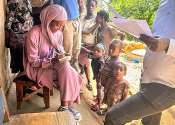National roaming can increase resilience of Dutch mobile networks
Within the Netherlands, your mobile phone only uses the masts of your own provider. Other providers' masts can only be used to reach emergency services. As soon as you cross the border, you can switch on roaming to use other ...
Apr 17, 2024
0
2









